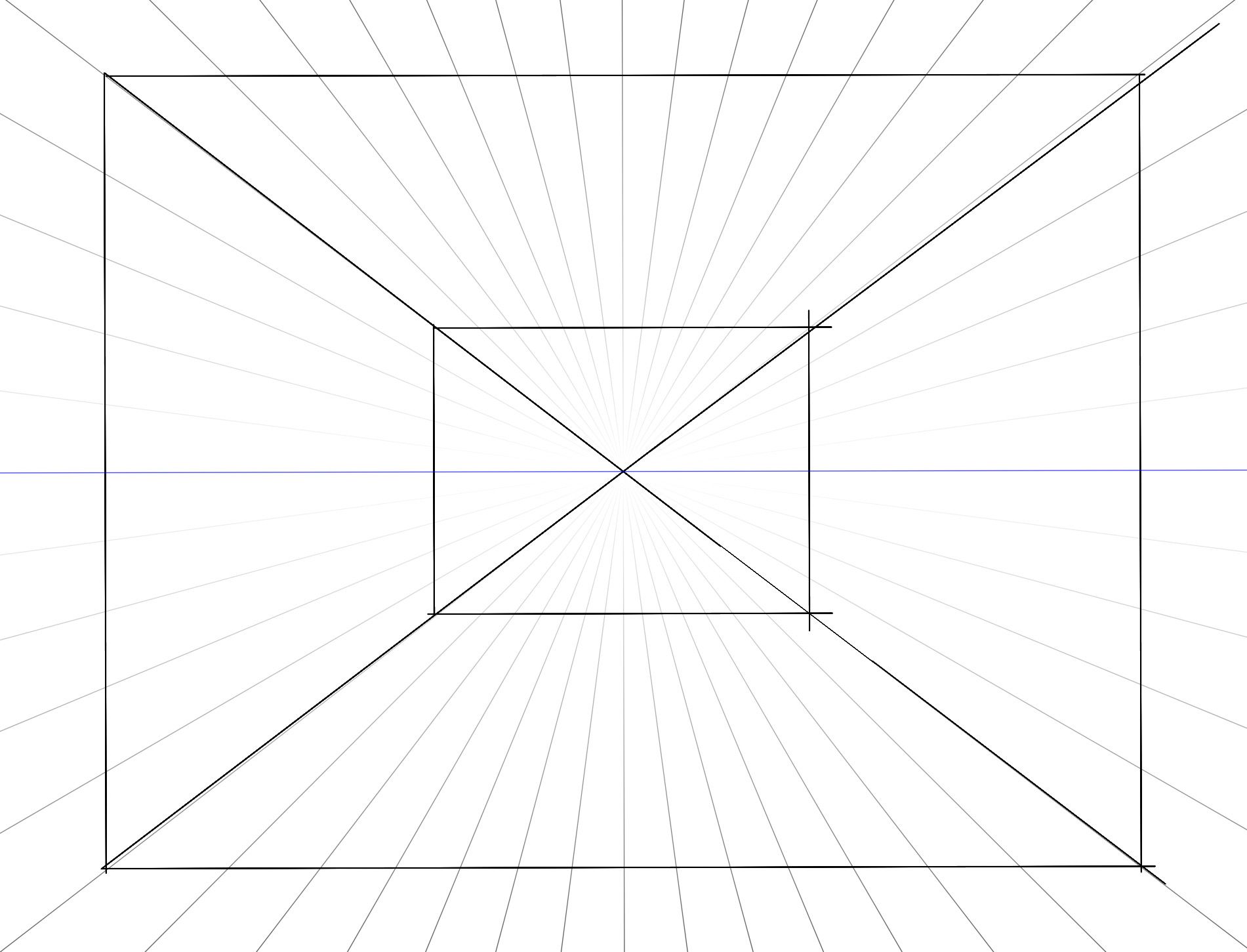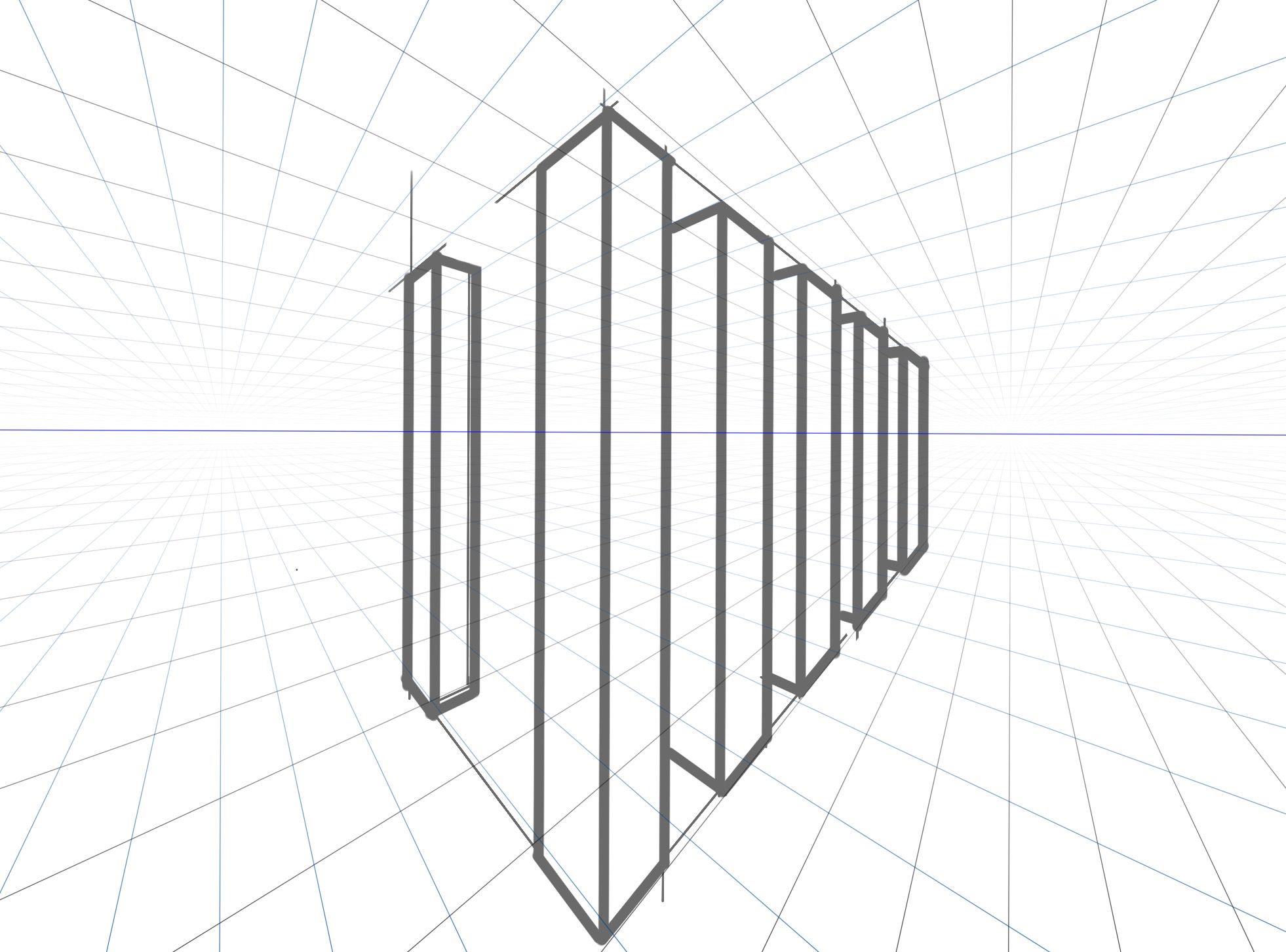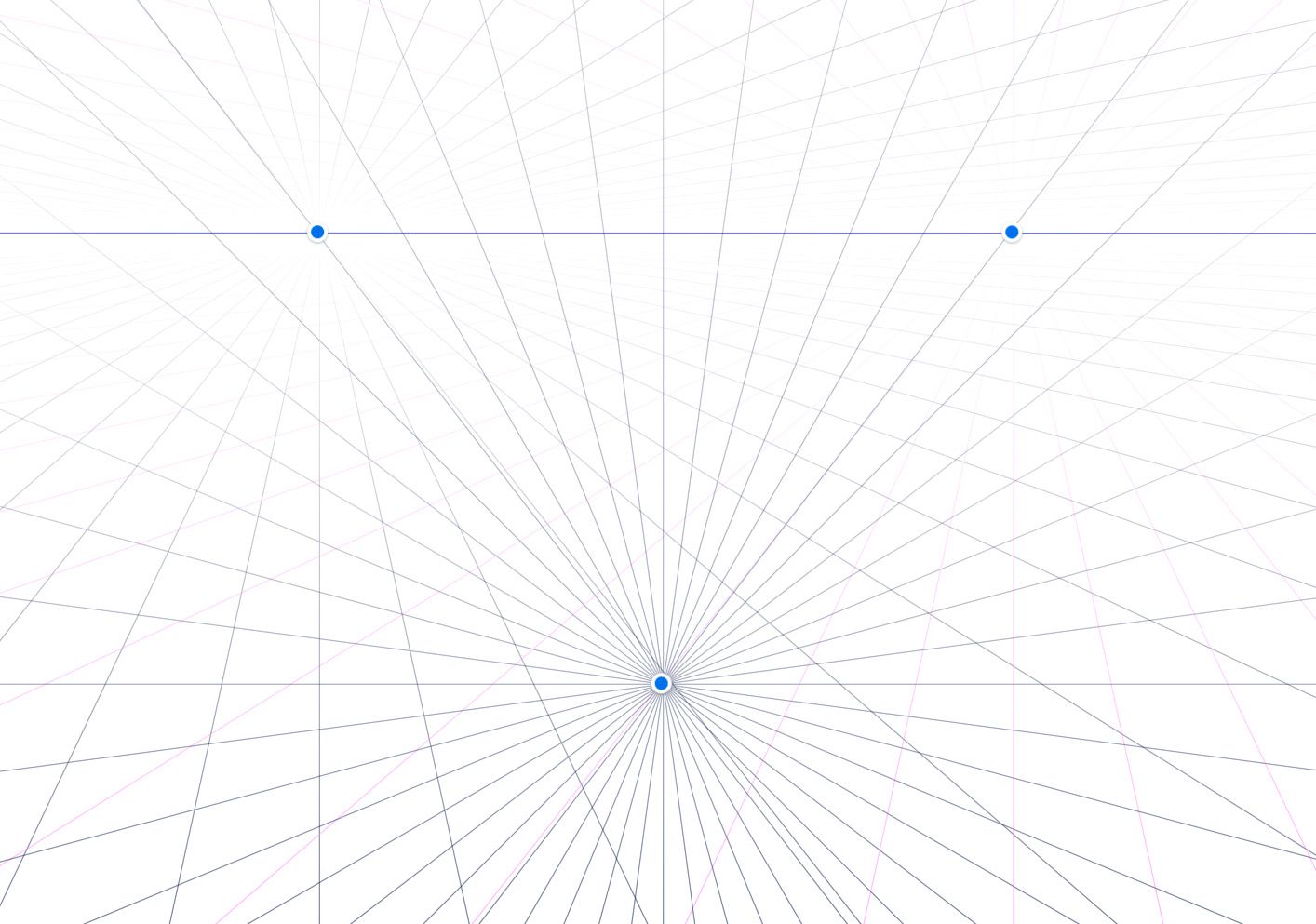Perspective is an impressive tool in art. It is the way human beings perceive depth; our brains are good at comparing things, which is how we distinguish between near and far. When drawing (or making any 2-dimensional picture), a set of rules can easily trick our eyes and brains to give the impression of depth to your artwork.
Perspectives can generally be separated into two types; Aerial and Linear.
Aerial perspective
This visual illusion uses the contrast of colours of clarity to create an illusion near and far. A great example would be landscape views, where elements at a far distance appear duller (or bluish) and less detailed than the near objects. This occurs in nature due to the interference of the atmosphere between our eyes and the object, which is also called atmospheric perspective.

Flat illustrations (lines and shapes) and prints (layers) are great mediums for exploring this effect and looking at optical illusions of this type. Overlapping of various elements clarifies which objects are in the front or back.

Linear Perspective
The mathematical rules of Linear Perspective were invented in the 15th Century during the Italian Renaissance, and it was devised about 1415 by the architect Filippo Brunelleschi. Though history has many examples of artists understanding this concept before the Renaissance, it did not have concrete rules like the ones made by artists and architects of the Renaissance. It was a geometric and scientific approach to making more realistic pictures or paintings.
Linear perspective uses the rule that all lines converge at a point which is the Vanishing point. Numerous points can be added to make simple and complex perspectives using this rule.
One Point Linear Perspective
Also known as Frontal View, this method is very useful when you want to draw an interior of a room or when you want to define a singular point.

The lines provide a supportive guide to draw on top.

Follow the lines when you draw other additional objects.

Two Point Linear Perspective
Similar to the Single point perspective, adding another point on the horizon line makes the framework for two-point perspective drawings. This method is used by architects and artists when making wider artwork.


Notice that the vertical lines are perpendicular to the horizon line. In this case, there is nothing wrong with the rule, but it does look unnatural depending on the subject drawn.
Three Point Linear Perspective
This method is the closest to what our natural eyes see; it includes vertical depth and creates a more realistic approach when drawing an object above or below eye level.
The third point is placed off the horizon line.

Now, drawing a cube on it, we can see that it looks different from the other point perspectives.

Unlike the two-point perspective, the vertical lines are not parallel, which creates a more realistic impression of the object's height.
